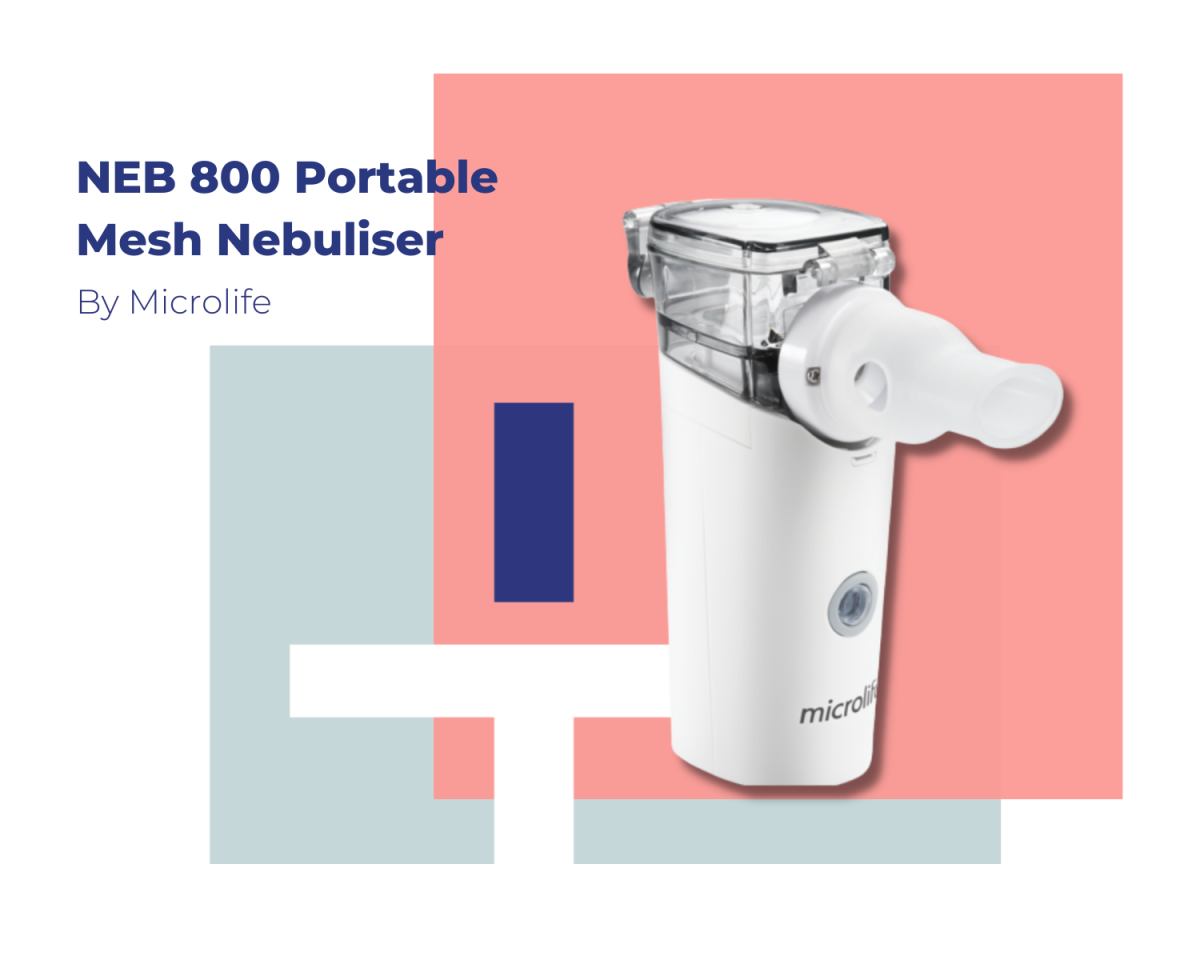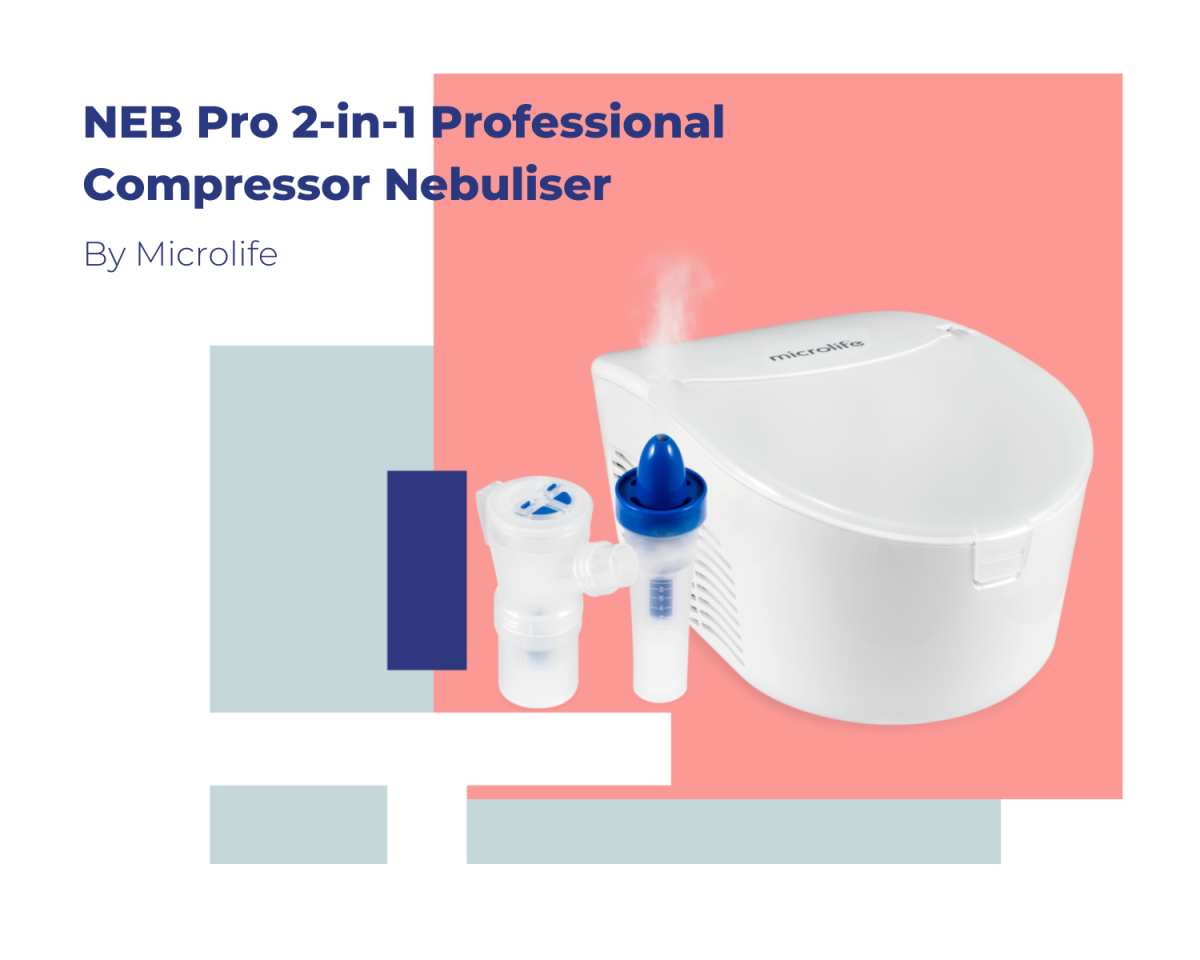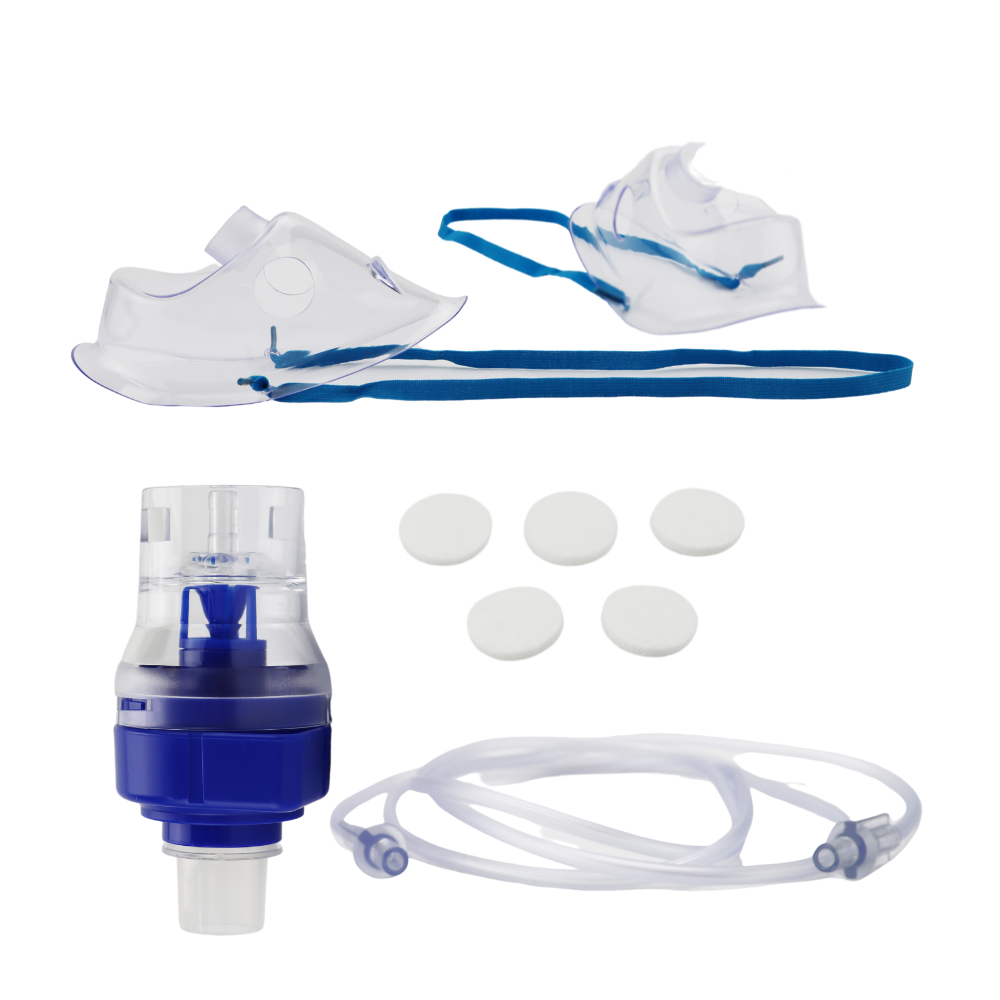Nebulisers All You Need To Know
What does a nebuliser do?
A nebuliser is a medical device used to treat respiratory conditions, including chronic Obstructive Pulmonary Disease (COPD), Asthma, Bronchiectasis, and Cystic Fibrosis, by dispensing medication directly into the lungs. Nebulisers use compressed air or ultrasonic vibrations to turn the required liquid medicine into a fine mist that is easily inhaled into the lungs. The mist can then reach deep into the lungs, delivering medication directly to the affected areas.
Nebulisers come in various forms, including portable or handheld nebulisers and larger table top models, and they can be powered by electricity or batteries. They are typically prescribed by a doctor and can be used at home or in a medical setting.
What are the different types of nebuliser?
There are a variety of different types of nebulisers to choose from, including:
Compressor nebulisers: Also known as jet nebulisers, these are the most common type of nebulisers. Compressor nebulisers pass compressed air through a small tube, creating a vacuum that draws liquid medication from a nebuliser cup. The medication is then turned into a fine mist and delivered to the patient via a mouthpiece or mask.
Mesh nebulisers: Mesh nebulisers use a vibrating mesh to turn the liquid medication into a mist. The mesh has thousands of tiny holes that allow the medication to pass through, creating a fine mist. Mesh nebulisers are small and portable, making them convenient for people who need them on the go. As these nebulisers are smaller, they are only suitable for certain medications.
Ultrasonic nebulisers: These nebulisers use high-frequency vibrations (2-3 million every second) to turn liquid medication into a fine mist that can be inhaled. Unlike compressor nebulisers, ultrasonic nebulisers do not use compressed air, which makes them quieter. There is also a higher risk of residual medicine, which means less reaches your airways and is wasted. These nebulisers are not suitable for all medication types, specifically thicker medications. We do not currently provide any ultrasonic devices.

Portable Nebulisers
One of the benefits of portable nebulisers is that they are convenient, small and lightweight, making them easy to carry around. They can be used at home, at work, or while travelling, making them a convenient option for people with respiratory conditions who need to take their medication on the go. This allows people with respiratory conditions to maintain their daily routines as the devices are commonly battery-powered.
These types of nebulisers are safe for people of all ages, from infants to the elderly.
Nebuliser medicines and solutions
Nebulisers require certain medications or solutions to treat respiratory conditions, which your healthcare provider will need to prescribe. A few medications can be used in a nebuliser, including bronchodilators, hypertonic saline solutions and antibiotics. Different forms of these medications include:
- Albuterol: This is a bronchodilator that is used to relieve bronchospasm, a tightening of the airways that makes it difficult to breathe.
- Ipratropium: This medication is also a bronchodilator, but it works by relaxing the muscles in the airways.
- Budesonide: This steroid medication is used to reduce inflammation in the airways.
- Levalbuterol: This is another type of bronchodilator similar to albuterol but is believed to have fewer side effects.
- Cromolyn sodium: This medication prevents asthma attacks by blocking the release of chemicals that cause inflammation in the airways.
It is important only to use a nebuliser medicine when prescribed by a healthcare provider, as overuse or misuse of these medications can lead to side effects and other complications. It is possible to purchase a nebuliser machine online without a prescription; however, your healthcare provider will need to prescribe your medication to use with it.
It is worth noting some medication manufacturers require a particular type of nebuliser to be used with it.

Home Nebulisers
Home nebulisers, also known as mains-powered nebulisers, are suitable for daily respiratory relief at home. They provide a convenient and effective way to manage your respiratory conditions.
Typically, your healthcare provider will recommend the best type of nebuliser for you and your condition.
How to use a nebuliser
If you require a nebuliser, your healthcare provider will recommend a device and take you through how to use it. Different types of nebulisers can have different steps included, so it is important to always follow your healthcare provider’s instructions.
Typically, nebulisers are very easy to use, with a few simple steps:
- Wash your hands thoroughly with soap and water.
- Assemble the nebuliser according to the manufacturer’s instructions.
- Pour the medication into the nebuliser cup, following the prescribed dosage and dilution instructions. If you are using a combination of medications, make sure to add them in the order specified by your healthcare provider.
- Attach the tubing to the nebuliser and connect the other end to the compressor.
- Sit upright and place the mouthpiece or mask over your nose and mouth.
- Turn on the nebuliser and breathe normally through your mouth until the medication is finished. It may take several minutes for the medication to be entirely administered.
- When finished, turn off the nebuliser and disconnect the tubing. Rinse the nebuliser cup, mask or mouthpiece, and tubing with warm water and allow them to air dry.
How do you clean a nebuliser?
Cleaning your device daily after every use is essential to gain the most benefits from your nebuliser. Cleaning your nebuliser prevents the risk of infection, viruses, and bacteria growth that can compromise the effectiveness of your device. Any liquid left in your nebuliser can easily cause bacteria to grow.
Every device will have machine-specific cleaning guidance; please refer to it for extra cleaning advice.
Typically, you will need to follow these steps to clean your nebuliser:
- Begin by washing your hands thoroughly with warm soap and water.
- Disassemble your nebuliser mask, mouthpiece and medicine cup.
- Rinse each part to remove any leftover medication.
- Fill a bowl with warm soapy water; use your usual washing-up liquid.
- Wash each part in warm soapy water.
- Rinse with clean water to remove any soap residue.
- Shake off excess water and leave the parts to air dry on a clean towel or paper towel.
- Reassemble your nebuliser once each part is dry.
Do not manually dry your nebuliser parts
You should allow your nebuliser parts to air dry, as manually drying the parts can create a static charge causing your medication to stick to the sides of your nebuliser, disrupting your treatment.
When should I replace my nebuliser parts?
How often you need to replace your nebuliser parts depends on how often you clean and use your device. You should follow your device manufacturer’s advice in your user manual.
Here are some basic guideline tips:
- Your air filters should be replaced every 30 days or when they become dirty and clogged.
- Nebuliser face masks and mouthpieces need replacing every two to three months, depending on if they become dirty or clogged.
- Replace your nebuliser cups every six months or sooner if they become discoloured or cracked.
- Tubing should be replaced every three months or sooner if it becomes cracked or damaged.

Nebuliser accessories
Keeping your nebuliser parts clean is one way to ensure your nebuliser last longer.
Many factors can cause the deterioration of your nebuliser parts, and it is normal for them to need replacing. You may notice your nebuliser stops working or doesn’t work as effectively; this could be because a part needs replacing.
We offer replacement nebuliser accessories for high-quality devices to treat your condition.
What is the difference between a nebuliser and an inhaler?
Both nebulisers and inhalers provide respiratory relief by delivering medication to your lungs. Depending on your condition will depend on what device you need. Your healthcare provider will advise you to use the more beneficial device for your condition.
Nebulisers vs inhalers
Here are a few of the main differences between nebulisers and inhalers:
Pros’
- Nebulisers can be easier to use than inhalers, especially for children.
- Nebulisers allow you to breathe normally, while inhalers require a specific breathing technique.
- Nebulisers make treating your condition easier than an inhaler as it is easier to breathe in the medication.
Cons
- Nebulisers can be more expensive than inhalers.
- Mains-powered nebulisers are much larger than inhalers; however, smaller travel options are available.
When should a child use a nebuliser?
Healthcare providers may recommend a nebuliser for a child if they suffer from respiratory difficulties, including swollen airways, shortness of breath and breathing issues. Nebulisers are especially useful for children who have difficulty using inhalers or require higher medication doses. Medication should only be prescribed by a healthcare provider.
The dosage and frequency of administration will depend on the child’s age, weight, and medical condition. It can take some time for a child to get used to using a nebuliser, but with the proper support and guidance, nebulisers are a safe and effective way to treat breathing conditions in children. If you think your child needs to use a nebuliser please consult with your GP or paediatrician for a prescription.
We are here to help
If you need a nebuliser and are not sure which device you require, you can contact us.


